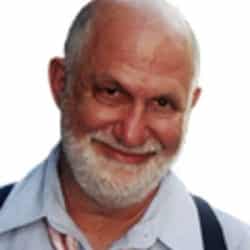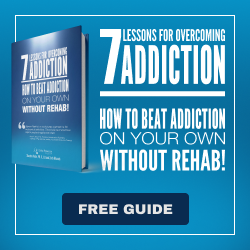Seven Things We Must Understand About Addiction to Undo the Mistakes of the Past 40 Years

When Archie Brodsky and I were writing Love and Addiction in the early 1970s, a medical resident told us, “Oh, we’ve established what addiction was long ago.”
It turns out, that wasn’t true.
In 2013, DSM-5, the most recent edition of the American Psychiatric Association’s diagnostic manual, redefined addiction to include gambling—American psychiatry’s first official recognition of a non-drug addiction. And, strange to say, it doesn’t declare that any type of drug causes addiction (indeed, neither did DSM-IV) out of confusion about the term.
Rather, DSM-5 uses a sliding scale of bad things drug users do, or suffer from, or both to gauge the severity of “substance use disorders.”
DSM’s authors seem to be wending their way back to where I was in the 1970s. With luck and a little bludgeoning, they may end up where I am now—which I’ll explain in a seven-point summary below.
In 1977, I wrote The Addiction Experience for what was then the Addiction Research Foundation’s (now called the Centre for Addiction and Mental Health, CAMH) popular journal, Addictions. I then turned it into a pamphlet for Hazelden Publishing.
But Hazelden discontinued publication of the pamphlet in 1988, after eight years of consistently high sales. Their new editor-in-chief wrote to me that she had taken this step because, “Unfortunately, we have heard much criticism from our customers who are not in agreement with your stand on the disease concept.”
Lately, the whole question of The Meaning of Addiction (the title of my academic book following Love and Addiction, in which I assessed the scientific basis for neurochemical and learning theories of addiction) has been reopened, by Marc Lewis and by my distinguished co-contributors at The Influence, Johann Hari and Maia Szalavitz. Marc and Maia, among their exceedingly valuable contributions to addiction theory, describe the intricacy of the way neurochemicals relate to behavior.
My argument in The Addiction Experience was that this reduction is impossible, and dangerously misleading:
Addiction is not caused by a drug or its chemical properties. Addiction has to do with the effect a drug produces for a given person in given circumstances—a welcomed effect which relieves anxiety and which (paradoxically) decreases capability so that those things in life which cause anxiety grow more severe. We are addicted to the experience the drug creates for us.
Addiction is clearly a process rather than a condition: It feeds on itself. We have also seen that addiction is multidimensional. This means that addiction is one end of a continuum. Since there is no single mechanism that sets off addiction, it cannot be viewed as an all-or-nothing state of being, one that is unambiguously present or absent.
At its most extreme, in the skid-row drunk or the almost legendary street addict, the person’s entire life has been subjugated to one destructive involvement. Such cases are rare when compared with the total number of people who use alcohol, heroin, barbiturates, or tranquilizers.
The concept of addiction is most apt when it applies to the extreme, but it has much to tell us about behavior all along the spectrum. Addiction is an extension of ordinary behavior—a pathological habit, dependence, or compulsion. Just how pathological or addictive that behavior is depends on its impact on a person’s life. When an involvement eliminates choices in all areas of life, then an addiction has been formed.
We cannot say that a given drug is addictive, because addiction is not a peculiar characteristic of drugs. It is, more properly, a characteristic of the involvement that a person forms with a drug. The logical conclusion of this line of thought is that addiction is not limited to drugs.
Psychoactive chemicals are perhaps the most direct means for affecting a person’s consciousness and state of being. But any activity that can absorb a person in such a way as to detract from the ability to carry through other involvements is potentially addictive. It is addictive when the experience eradicates a person’s awareness; when it provides predictable gratification; when it is used not to gain pleasure but to avoid pain and unpleasantness; when it damages self-esteem; and when it destroys other involvements. When these conditions hold, the involvement will take over a person’s life in an increasingly destructive cycle.
I’m now in my 70th year and writing my memoir, which has given me plenty of opportunity to reflect. Here is my updated version of addiction:
1. Addiction is not a special chemical trait of narcotics or of drugs at all. There is no specific brain process that is addiction. Addiction is a way of being, of relating to a specific experience, and can occur with any powerful involvement.
2. As a corollary, most drug use is nonaddictive. This emphatically applies to opioids, the subject of our current national drug scare: Tens of millions of Americans take the most powerful painkillers, in and out of hospitals, without becoming addicted to them.
3. Drugs have the same range of potential benefits (e.g., analgesia, relaxation, conviviality, therapy—as in use of psychedelics), as well as drawbacks (such as addiction) as many other activities. Whether these benefits and drawbacks manifest depends on the individual, the situation and society.
4. If people do become addicted, to whichever drug, or to alcohol, or to other experiences, they typically outgrow the addiction. Maturing out of addiction is the ordinary course of events. This fact, which I began pointing out in the early 1980s, is periodically re-revealed (including by Maia and me), and each time greeted with amazement and disbelief.
5. The most important determinants of addiction and recovery are not the drug or other addictive object, nor the kind of treatment the person receives. Instead, they are the cultural milieu and the social and economic conditions in which the person lives, along with the person’s life outlook and beliefs about addiction and the involvement.
6. Since addiction results from a combination of elements, it occurs along a continuum. People may be more or less addicted. There are exceptional cases that may look like full-bore, media prototypes. But nearly everyone who is addicted is capable of varying their behavior in the short-term as well as the long, and their addictions wax and wane.
7. In the past four decades, our lives have changed radically in ways that are often disempowering. These changes disconnect us from our physical environments and from other humans. Our addiction and mental illness epidemics can’t be reversed without addressing these trends, individually and as a society. Our current conception of addiction doesn’t do this, and in fact it contributes to this alienation and disempowerment.
As I wrote in The Meaning of Addiction:
Our conventional view of addiction—aided and abetted by science—does nothing so much as convince people of their vulnerability. It is one more element in a pervasive sense of loss of control that is the major contributor to drug and alcohol abuse, along with a host of other maladies of our age. We feel we must warn people against the dangers of the substances our society has banned, or attempted to curtail, but cannot eradicate. This book argues that our best hope is to convey these dangers realistically, by rationally pointing out the costs of excess and, more importantly, by convincing people of the benefits of health and of positive life experience. Otherwise, the idea of addiction can only become another burden to the psyche. Science cannot increase our understanding of ourselves and our world—nor can it show us the way to freedom—if it is held captive by our fears.
This vision has manifested itself in our current addiction epidemic, as I have described for The Influence. It will only be remedied when we are able to normalize drug use and focus instead on ways to enrich our world and our lives.



 Readers Question: (Name changed for privacy)
Readers Question: (Name changed for privacy)



The concept of addiction also conveniently hides the effects of stress and other problems that results in less self efficacy or less self control. This is useful if you want to avoid debating the consequences of long work hours, poor quality of food, financial stress, sleep deprivation and a host of other common problems.